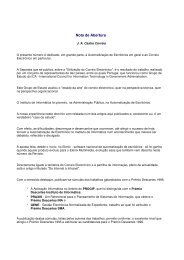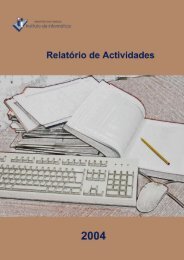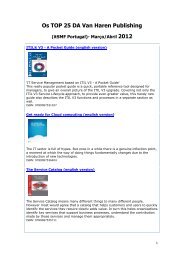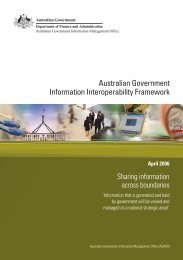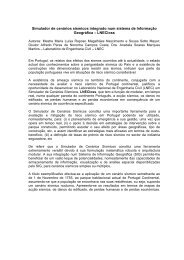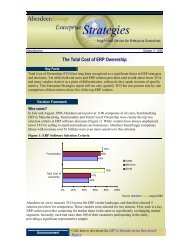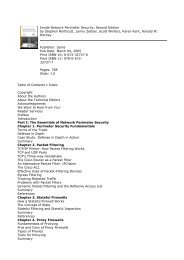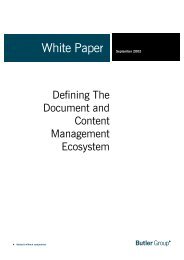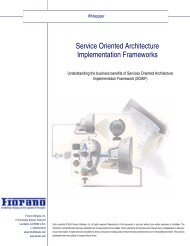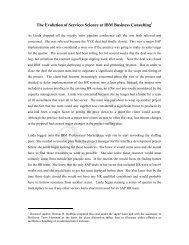OECD Peer Review of E-Government in Denmark - ePractice.eu
OECD Peer Review of E-Government in Denmark - ePractice.eu
OECD Peer Review of E-Government in Denmark - ePractice.eu
You also want an ePaper? Increase the reach of your titles
YUMPU automatically turns print PDFs into web optimized ePapers that Google loves.
1. The fact that the <strong>in</strong>itiative was developed under the leadership <strong>of</strong> the Jo<strong>in</strong>t Board <strong>of</strong><br />
e-<strong>Government</strong> with the back<strong>in</strong>g <strong>of</strong> m<strong>in</strong>isters <strong>in</strong> the <strong>Government</strong> F<strong>in</strong>ance Committee gave it<br />
credibility and ensured a sense <strong>of</strong> responsibility to participate.<br />
2. Under the leadership and co-ord<strong>in</strong>ation <strong>of</strong> the Digital Task Force, market<strong>in</strong>g <strong>of</strong> the <strong>in</strong>itiative<br />
to citizens and bus<strong>in</strong>esses created public expectations that acted as a powerful external driver<br />
for organisations to participate. Most organisations, even if they were not conv<strong>in</strong>ced by the<br />
bus<strong>in</strong>ess case, did not want to be seen by either m<strong>in</strong>isters or the public to be fail<strong>in</strong>g to<br />
participate <strong>in</strong> deliver<strong>in</strong>g the benefits promised by eDay.<br />
3. Giv<strong>in</strong>g the public and bus<strong>in</strong>esses a right, through eDay 2, to <strong>in</strong>sist on electronic<br />
communications with government effectively re<strong>in</strong>forced the <strong>in</strong>centive to participate <strong>in</strong> the<br />
eDay <strong>in</strong>itiative created by the eDay market<strong>in</strong>g programme undertaken by the Task Force and<br />
<strong>in</strong>dividual organisations.<br />
4. Build<strong>in</strong>g on m<strong>in</strong>isters’ and the public’s expectations <strong>of</strong> change, <strong>in</strong> the small number <strong>of</strong><br />
<strong>in</strong>stances where organisations did not want to participate, the threat that the Digital Task<br />
Force would publicise non-participation provided the necessary <strong>in</strong>centive.<br />
This last po<strong>in</strong>t should not be overemphasised. By all accounts, very few organisations seriously<br />
resisted be<strong>in</strong>g <strong>in</strong>volved <strong>in</strong> the eDays. As already noted, one <strong>of</strong> the most outstand<strong>in</strong>g features <strong>of</strong> eDay is<br />
the scope <strong>of</strong> change that was achieved on a “voluntary” basis. Also, despite the fact <strong>of</strong> a positive<br />
bus<strong>in</strong>ess case, the provision <strong>of</strong> strong leadership and support by the centre <strong>of</strong> government, and creation<br />
<strong>of</strong> powerful <strong>in</strong>centives for participation, it is important to understand that the success <strong>of</strong> both eDays<br />
would not have been possible without consensus and co-operation among the organisations <strong>in</strong>volved.<br />
Next steps<br />
Follow<strong>in</strong>g eDay 2, work <strong>in</strong> this area has been concentrated on encourag<strong>in</strong>g government<br />
employees to use secure digital communication effectively, and on work<strong>in</strong>g closely with those<br />
organisations still significantly us<strong>in</strong>g paper-based communications to assist them <strong>in</strong> clos<strong>in</strong>g those nonelectronic<br />
channels (where possible) <strong>in</strong> due course. Further work will also be undertaken to assist<br />
citizens and bus<strong>in</strong>esses <strong>in</strong> communicat<strong>in</strong>g electronically with government, and develop<strong>in</strong>g robust<br />
practices for management <strong>of</strong> sensitive communications.<br />
Conclusion<br />
The eDay <strong>in</strong>itiative has clearly had a positive impact on achiev<strong>in</strong>g <strong>Denmark</strong>’s e-government<br />
goals, enabl<strong>in</strong>g the public sector to take a collective step forward <strong>in</strong> its capacity to operate digitally. It<br />
has also had a positive impact on <strong>in</strong>dividual organisations’ <strong>in</strong>formation and ICT policies, strategies<br />
and capabilities, has generated considerable cost sav<strong>in</strong>gs, and has been a powerful demonstration <strong>of</strong><br />
the benefits <strong>of</strong> e-government, both with<strong>in</strong> and outside <strong>of</strong> government. eDay <strong>of</strong>fers <strong>OECD</strong> countries a<br />
very <strong>in</strong>terest<strong>in</strong>g, and potentially replicable, example <strong>of</strong> how a country can rapidly advance its e-<br />
government read<strong>in</strong>ess and achievements.<br />
159



